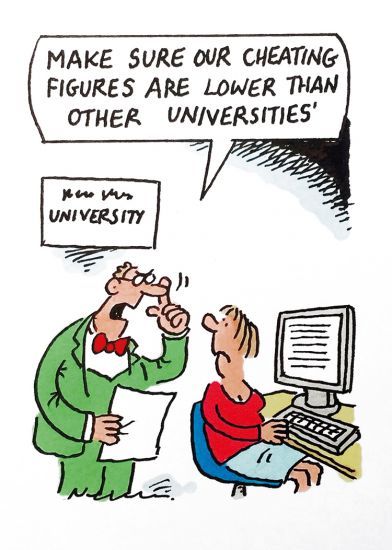
A Daily Mail story that suggested some 50,000 foreign students “disappear into the black economy” every year has been condemned as “dog-whistle conjecture” by Universities UK. In an 11 April article, the Mail quoted “official figures” taken from an Office for National Statistics report that “highlighted the scale of abuse of the system by immigrants desperate to stay in the UK after finishing their education”, adding that the ONS “might have undercounted the number of overseas graduates arriving in the country” due to a failure to survey all incoming passengers. In a blog published on the same day, Jo Attwooll, UUK’s programme manager, explained that the ONS report made no reference to rampant visa abuse, stating that the latest available evidence actually states non-compliance rates are as low as 1 per cent. More puzzling, however, is why the Mail decided to cover an ONS report some 15 months after it was released in January 2016. Could Theresa May’s new spin doctor James Slack – a former Mail political hack – be feeding his old paper some propaganda to help head off the growing backbench revolt over the prime minister’s refusal to exclude overseas students from migration targets?
Academics are generally keen to stop their undergraduates spending too long in the student bar in case their studies start to suffer. The University of Suffolk might make an exception in one case, however, after launching its own brand of beer, the Ipswich Star reported on 12 April. The university has teamed up with local brewers Calvors to produce Suffolk Graduate – “the first degree beer” – which will be served for the first time on 22 April to coincide with a campus open day. “We are sure [that] Suffolk Graduate will go down well with staff, students and the local community,” said vice-chancellor Richard Lister, who added that the specially brewed beer was “just another way” to celebrate Suffolk’s attainment of full university status last year.
A three-legged cat is helping to relieve student stress at a University of Cambridge library, BBC News online reported on 9 April. Jasper, a five-year-old ginger tom, has become a big hit with students at Cambridge’s Marshall Library of Economics, with a recent “tea with Jasper“ event attracting 140 attendees, the site reported. “Students coming to visit and pet Jasper told us just how much he’d calmed them down, and helped relieve any stress,” said librarian Clare Trowell, whose colleague, Simon Frost, adopted the much-loved moggie from a rescue centre. Jasper may be helping stressed-out undergraduates get through their finals, but with reports of rabbit cafes, puppy petting mornings and therapy horses, the appearance of the so-called economics cat must surely represent “peak higher education pet stories”. No more!
University experts have finally solved one of the great scientific mysteries of our age – why do shoelaces come undone? According to a Sun report on 12 April, researchers at the University of California, Berkeley found the knotty problem of unravelling shoelaces is explained by two factors: the repeated impact of the shoe hitting the floor, which loosens the knot, and the leg swing caused by walking that creates a whipping motion, causing the whole thing to untie. “This is the first step towards understanding why certain knots are better than others,” said mechanical engineer Christopher Daily-Diamond, whose research recommends a strong square knot over the traditional way of tying laces with a granny knot.
Hidden earpieces, miniature cameras and smartwatches were just some of the devices used to cheat in university exams in recent years, a Guardian investigation revealed on 10 April. According to figures obtained by the paper using Freedom of Information requests, the number of cases of cheating involving technology has risen by 42 per cent over the past four years, with mobile phones and other electronic devices now featuring in a quarter of cheating cases. At one institution – Newcastle University – the proportion of cheating cases involving technology was as high as 43 per cent. The existence of tiny gadgets, such as mini earpieces and micro-cameras, meant that it was sometimes impossible to detect cheating, several academics admitted. “Students who cheat well won’t always get caught, especially now there’s so much mini-tech out there that is hard to spot,” said Thomas Lancaster, an associate dean at Staffordshire University.